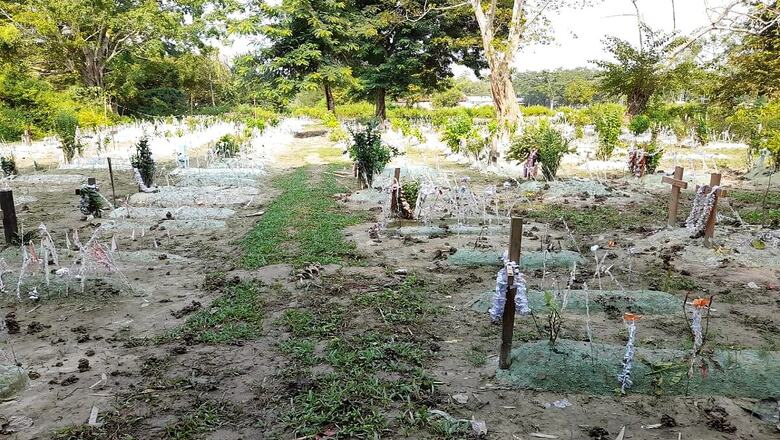
views
Spread over more than twelve bighas of land, Goronga Kabarstan, a non-descript burial ground in Titabor sub-division of Assam, has been practising what states like Goa is pushing for – a common cosmopolitan graveyard.
The only thing that has come up recently is a “T’ shaped concrete drain, rest everything remains untouched in the Goronga Kabarstan over the past hundred years.
Situated some 25 kilometres from Jorhat town, the graveyard has been the common burial destination for Hindus, Muslims and Christians alike since 1920.
“It has been a tradition since my childhood. All the burial places and the crematorium is within the common boundary. People from all faith come here and perform the last rites of the deceased in their own rituals and customs. This burial place is a cosmopolitan one, people from Hindu, Muslim and Christian community come to the same place. The Goronga Kabarstan has not seen a single dispute or discontent in the past 100 years. This is unique and I believe the true essence of India,” said Imran Hussain, Secretary, Gogonga Kabastan Committee.
The burial ground caters to the need of five villages and a population of over 6,000 people. The Muslim Kabarstan was officially registered within the Goronga Kabarstan in 1982 and the Hindu crematorium was done in 1984.
“There are over 1,000 Christian graves here, including Roman Catholic, Protestants and Churches of North India. People from the neighbouring tea gardens and the native tribal of Jharkhand who has settled here for centuries come to Goronga Kabarstan for their burials. The Sonwal tribal villagers perform their last rites according to Hindu rituals in the common burial ground,” said Imran Hussain.
“It is significant that people from all religions gather to perform the final rites of the deceased irrespective of the community,” he added.
With the advancement and development taking place all around, a sporting complex, Higher Secondary School, lower and middle schools and community hall have come up in the vicinity of the Goronga common burial ground. However, in all these, Goronga remains untouched and unaltered.
It was the Goa government, which has been pushing municipal bodies to build common burial and cremation grounds where people from across religions can be laid to rest next to each other, a first in India.
Goa’s first common burial ground, which the Ponda Municipal Council has constructed within the campus of a Hindu crematorium, has the capacity to accommodate 42 bodies.
Read all the Latest News, Breaking News and Coronavirus News here




















Comments
0 comment